The 'Heart of Mexico' Offers Colorful Cities, Tequila Tastings, ATV Mountain Tours, and Hot-air Balloon Rides
This was supposed to be a story about a place. About Guanajuato, a region that encompasses Guanajuato City and San Miguel de Allende, two UNESCO World Heritage sites in Mexico's central highlands region. I envisioned myself meandering around the colonial-era cities, weaving in and out of its kaleidoscopic streets, exploring its many historic monuments, and of course, eating my weight in tacos, chilaquiles, enchiladas slathered in salsa roja and verde, and sugar-dusted churros, dunking, then twirling each one into chocolate sauce. I pictured myself sampling tequila straight from the source, too, staring out onto the vast, spiky field of agave plants, and stepping out of my comfort zone during a temazcal ceremony and ATV tour in the mountains, both on the itinerary for the week. All those visions played out just as I had imagined, it's true, but somewhere along the way, the story began to shift.
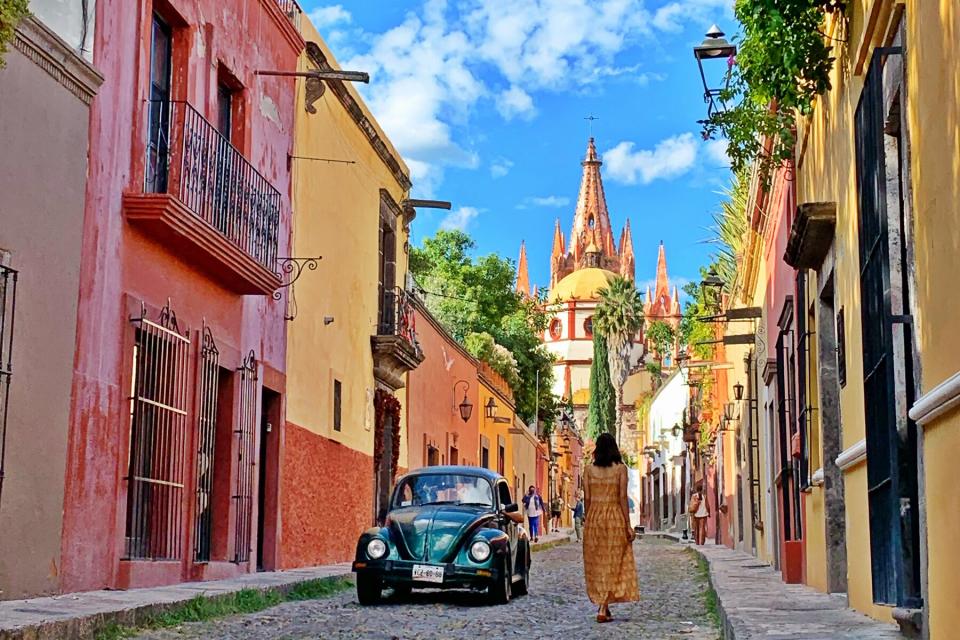
Courtesy of Alisha Prakash
On a Sunday afternoon, our oversized van bobbed back and forth, steering the bumpy, cobbled roads in Corralejo de Hidalgo, a hacienda situated within the sunbaked town of Penjamo. Although this little jewel is just an hour and a half from Guanajuato City and two hours from popular San Miguel de Allende, tourist sightings were sparse; instead, we shared the street with a well-behaved herd of cows that had our cameras perked up and faces glued to the window.
But we were here for El Alma de la Cocina, an unassuming restaurant where cooks work to preserve the region's traditional cuisine using fresh ingredients grown on the on-site farm. As we sat under guava trees, surrounded by the sounds of Mexican music, Alma, who helms the operation, graciously welcomed us in for a multicourse feast that had us audibly mmm-ing after every bite: first, refreshing guava juice, then belly-warming xoconostle soup with corn; larga (a thick tortilla topped with beans, cactus, and dried jerky); and for dessert, fritters with tomato jam. It's an intimate, no-frills place — friendly dogs roam freely, fold-out chairs and tables are strewn about — that makes you feel like you're in the comfort of someone's home. (Alma and her sister do, in fact, live on the property.) Though we were separated by language, I could sense the pride Alma had for her work as she excitedly showed us around the grounds, taking great care to explain the ins and outs of the farm and restaurant. "Alma means soul," one of our guides (and translators) tells us. "She's the soul of the kitchen." Alma was unmistakably the core of the restaurant, but she, and other locals like her, are also the heart of the region.
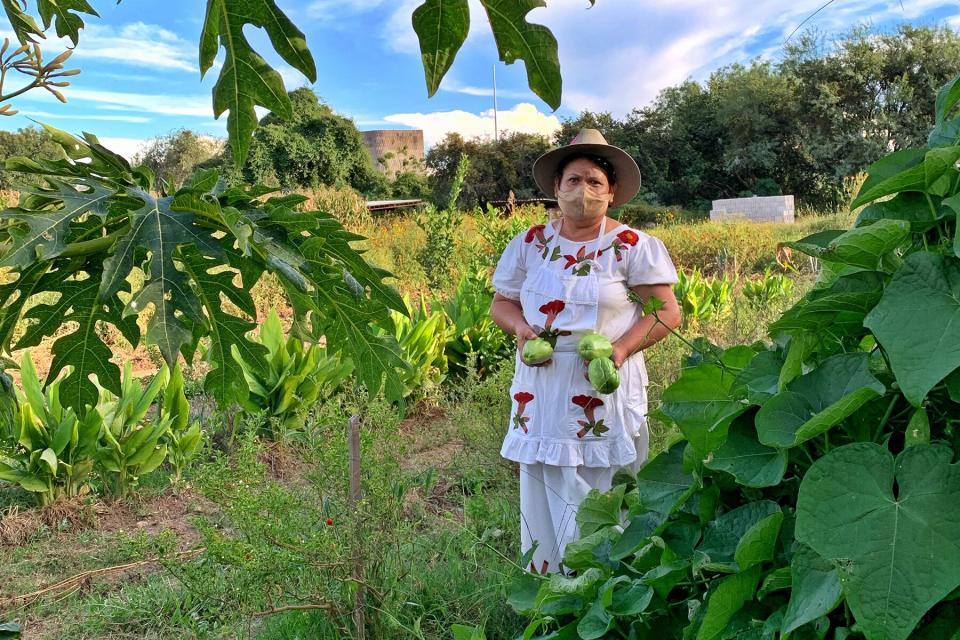
Courtesy of Alisha Prakash
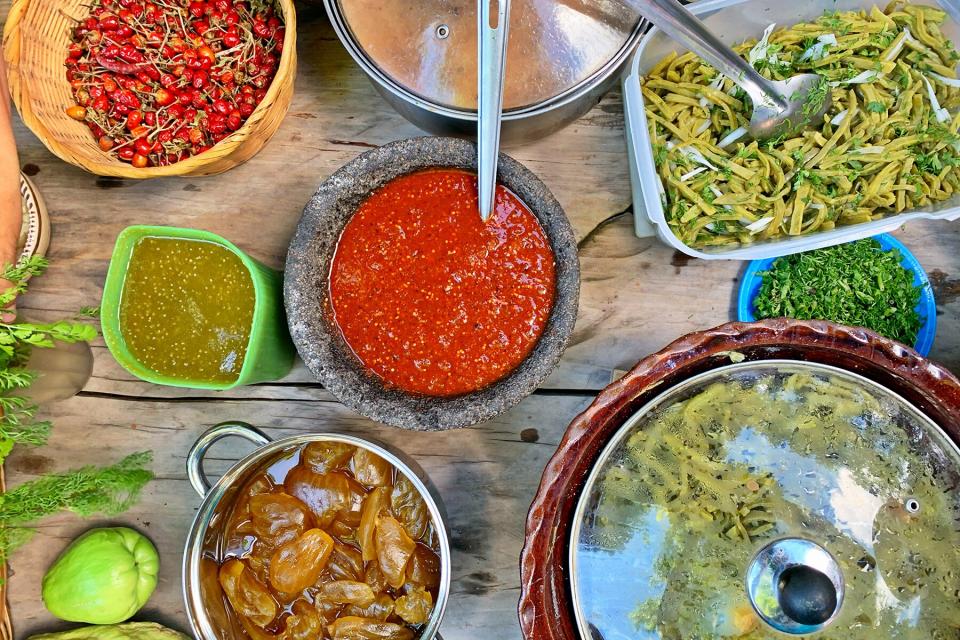
Courtesy of Alisha Prakash
Earlier that day, our group traveled to a tequila distillery and agave farm to learn more about the life cycle of the popular beverage, from plant to bottle. Tequila, a common protagonist during any trip to Mexico, is perhaps best known for being produced in Jalisco, a state on the western end of the country and home to a town that shares the same name as the elixir. So, when we were invited to experience the spirit and learn about its creation in Penjamo, over three hours away from Jalisco, naturally, I was skeptical. But this hidden gem of a town — and more importantly, the people in it — continued to surprise me.
Arriving at Rancho El Coyote, a sprawling agave ranch owned and run by the Hernandez family, the first thing that met our gaze was the dramatic expanse of spiny plants stretching back to the mountains towering in the distance. As far as appearances go, it was no doubt an impressive display — one that warranted an onslaught of photos and Instagram videos — but after the initial awe subsided, we were greeted with something even more special: the father-and-son team who runs the place.
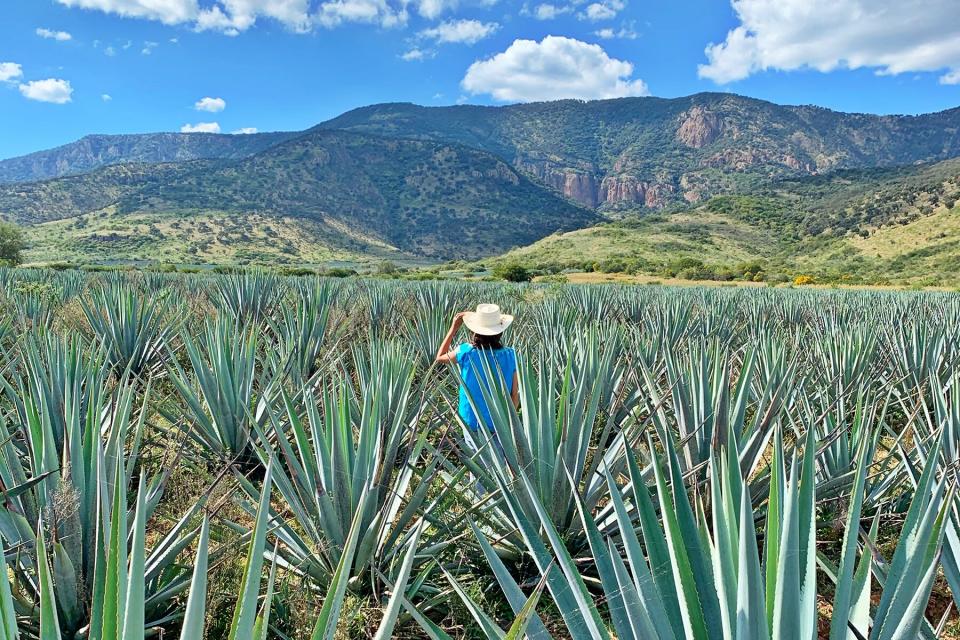
Courtesy of Alisha Prakash
By way of a translator, the trio shared bits of their history (they began making tequila in 2005) and invited us to taste their locally made tequila, including some varieties, like the Orgullo del Penjamo, which aren't available in the U.S. Between sips, chips drizzled with hot sauce and lime, and friendly conversation, Luis, the father, handed me a machete-like tool, gesturing that it was time to try chopping the agave — not an easy feat, liquid courage or not. Stamina aside, I learned that, above all, producing the spirit calls for the utmost passion and patience — at least nine years pass from when the seed is planted to when we're blending it in our margaritas.
Related: This Luxury Tequila Brand Is Honoring a Lesser-known Region of Mexico With a New Mezcal
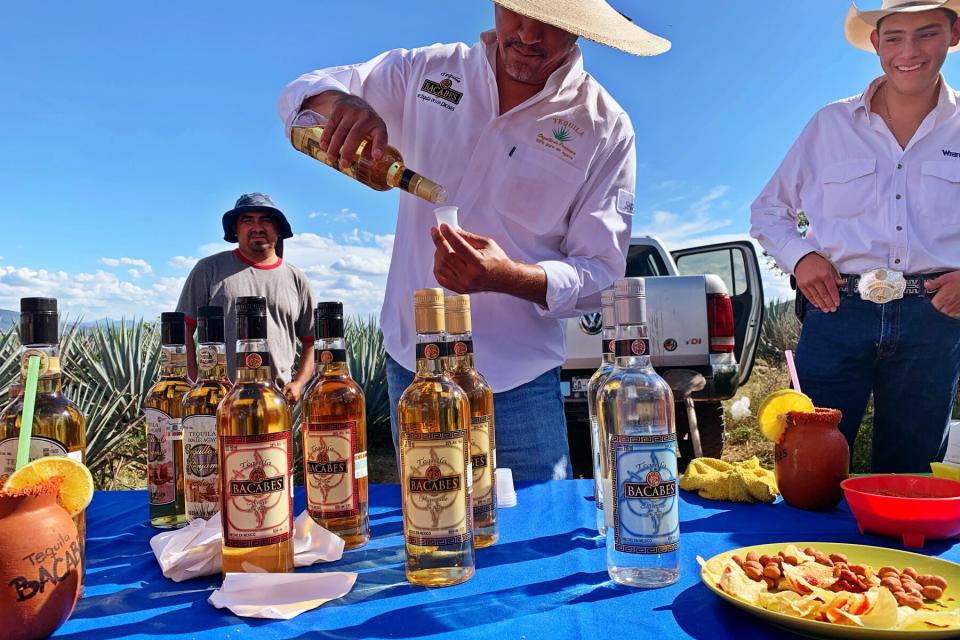
Courtesy of Alisha Prakash
To learn more about the process — roasting, fermenting, distilling, and aging in oak barrels — visitors can tour the Tequila Corralejo distillery, a short drive from the ranch. During a tasting of the 99,000 Hours tequila — named for the amount of time it takes to produce one bottle — Nohemi Murillo, ecommerce manager for the distillery, picks up a bottle, saying, "It's shaped like a trunk to show the passion it takes to wait for something for so long. It's to appreciate how long it takes to make, and where it came from."
But this region isn't all about food and drink. It does wellness well, too, from soothing, spa-like hot springs to rituals steeped in Mexican heritage. Having heard of a temazcal, a centuries-old ceremony that dates to pre-Hispanic times, I was intrigued to try it myself with Ce-kalli Temazcal & Spa in Silao, under an hour from Guanajuato city. Led by a shaman through songs and chants, participants are tasked with sitting in a sweat lodge for several, sweltering sessions to cleanse their body and mind — a daunting undertaking for even the most spiritual travelers, let alone a frenetic New Yorker who can't sit still for five minutes without contemplating her calendar: the emails she owes, the work that's piling up.
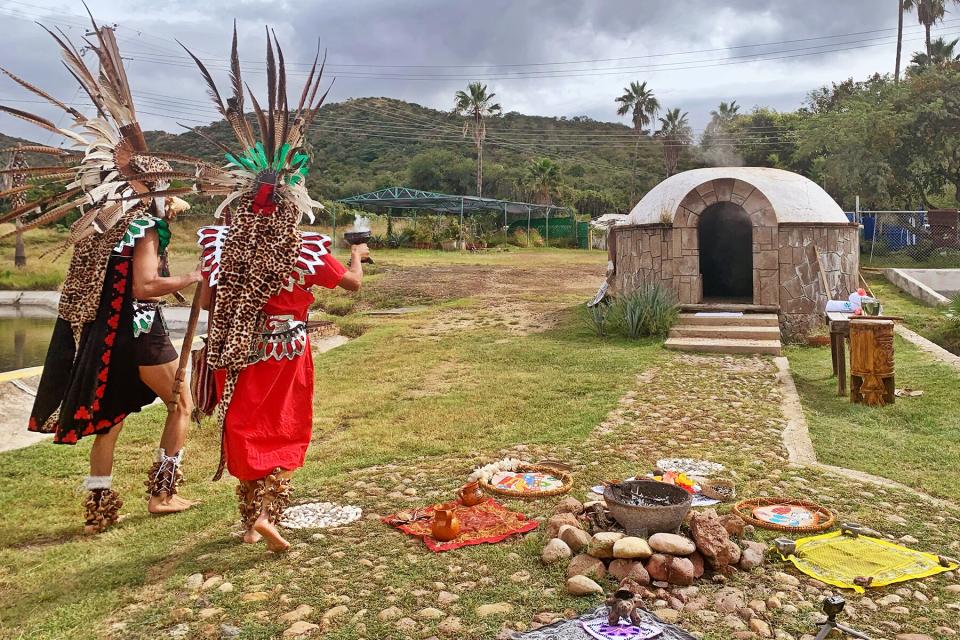
Courtesy of Alisha Prakash
The shaman looked as I had imagined — long hair, messy beard, traditional garb — and though I was noticeably out of my element, fumbling through the songs, he remained warm, welcoming, and friendly. As the temperature climbed, he encouraged us to keep our eyes closed. But every time I fluttered one open to sneak a peek, I found him smiling, reassuring me that I was doing it all right. Five 10-minute rounds of introspection and reflection later, I emerged from the dome-shaped structure. Soothed by the cool, crisp air, I promptly wrapped myself in a towel and surveyed the scene — nothing but nature all around. My body was buzzing. I was still the same me, but I felt a tinge of euphoria.
Perhaps it was the relief of fresh air, or maybe it was temezcal's healing powers, but isn't that the great thing about travel — that stepping into the unfamiliar often rewards with new experiences that broaden your world view, that being open-minded often leads to strangers becoming friends and even teachers?
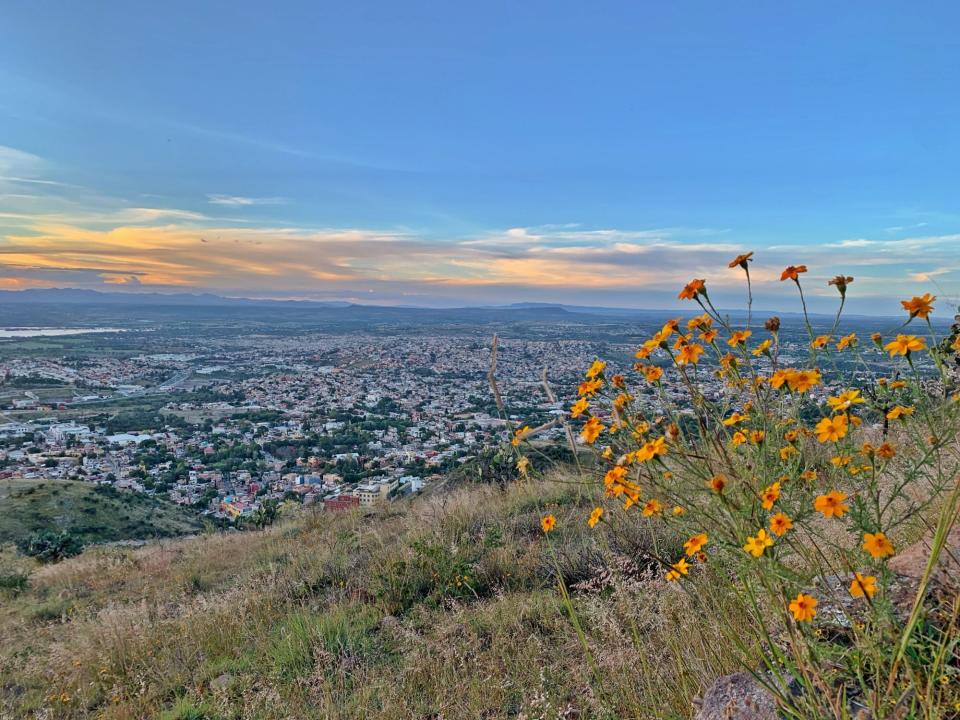
Courtesy of Alisha Prakash
That wasn't the first time the region tempted me to step out of my comfort zone, either. San Miguel de Allende, an impossibly photogenic city located about 150 miles north of Mexico City, is recognizable for its colorful colonial Spanish architecture, quaint cobblestone streets, mind-blowing gastronomy scene, and design-forward luxury hotels — all qualities that transformed it from a sleepy town to a cosmopolitan magnet, but the UNESCO-designated destination has an adventurous side, too.
After a few days spent roaming the pastel-washed warren of buildings, feasting on authentic Mexican cuisine (Kab'An, Adanza at the Belmond, the Rosewood's Luna Rooftop Tapas Bar), and getting pampered at hotels (Hotel Matilda, Rosewood), it was time to rent an ATV with San Miguel Parque de Aventura and head for the city's surrounding mountains. A professional guide takes groups out for a thrilling, two-hour sunset drive that culminates at the highest point of the city for a spell-casting view.
For those who prefer to be up in the air instead, the operator offers zip-lining tours; hot-air balloon rides with Globo San Miguel Tours are also an option for a breathtaking bird's-eye view.
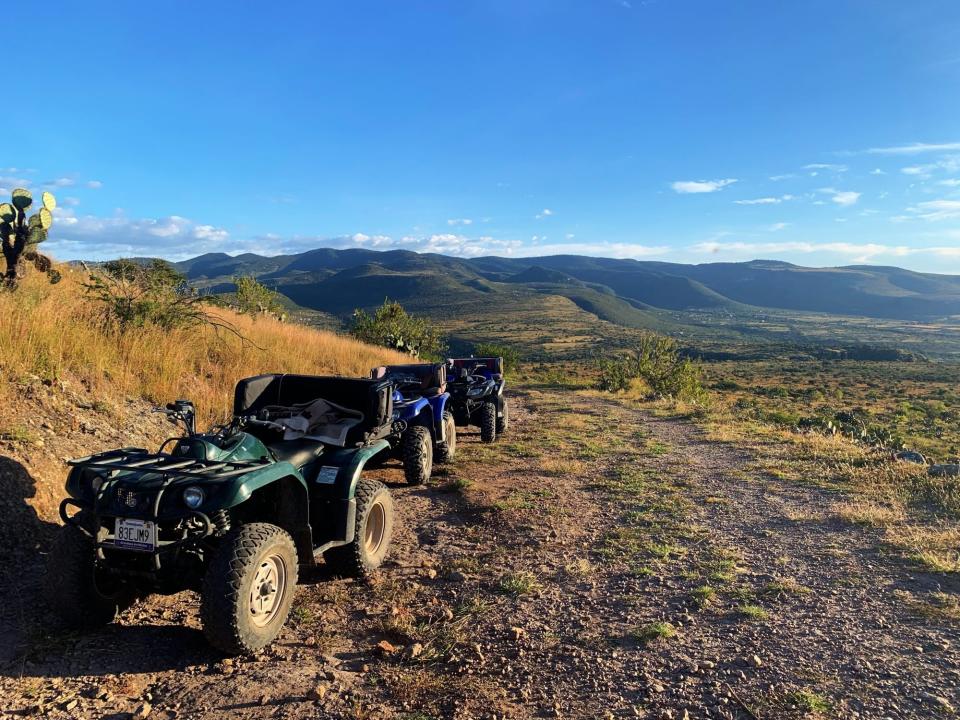
Courtesy of Alisha Prakash
After a recent surge in popularity — San Miguel has snagged the top spot in Travel + Leisure's list of world's best cities more than once — I half-anticipated a tourist trap. But despite the visible travelers here, an unspoiled charm still courses through the streets, with a palpable air of mystery as to where all the brightly hued doors lead.
Behind one of those doors is the studio of artist Hermes Arroyo, who creates mojigangas (picture massive papier-mâché puppets) for weddings and yearly festivities like Dia de los Muertos. Arroyo, in a paint-stained apron and big, ear-to-ear smile, warmly welcomed us into his workshop for a lesson in creativity, and ultimately, trusting our instincts as we spent the evening crafting our own cartonerías. As I winced and whined each time the paint didn't appear just right — an accidental drip here, an imperfect line there — Arroyo observed my work, and rather than letting me start over, he helped me turn my mistake into something beautiful. You could tell this was a labor of love, and he was delighted to share it with us.
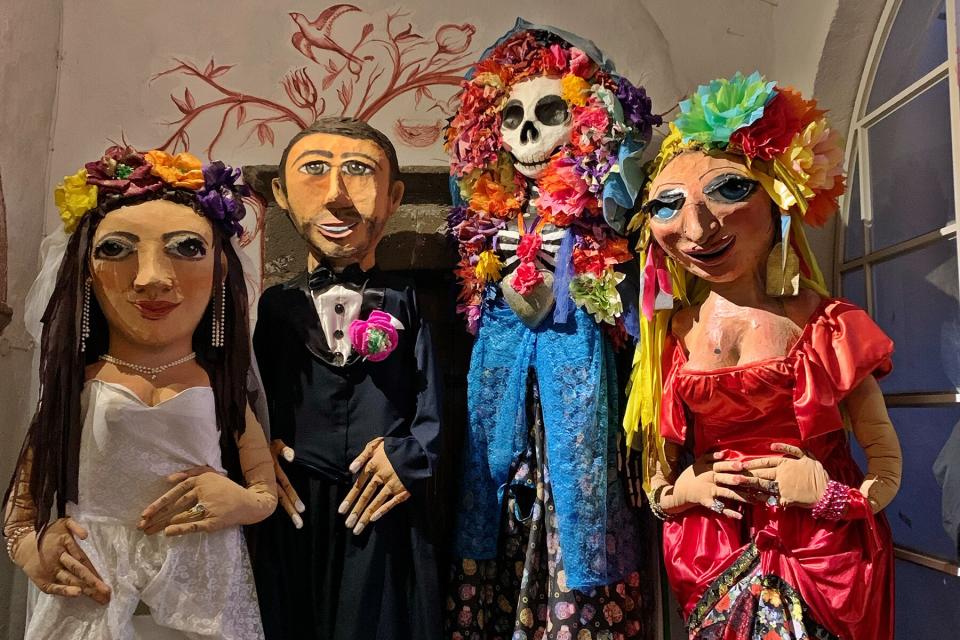
Courtesy of Alisha Prakash
For more artistic pursuits, make your way to Guanajuato City, another enchanting UNESCO destination far from the golden coastline many envision as synonymous with Mexico. Founded by the Spaniards in the 16th century for its silver supply, Guanajuato became a center for mining, which is still apparent in its subterranean streets. But today, it's also teeming with museums, theaters, leafy plazas, and of course, a splash of color. Though less-touristed and slightly grittier than San Miguel de Allende, there are still plenty of cultural experiences to be had, from the International Cervantino Festival — a nearly month-long buffet of theater, music, and art that takes over the city in the fall — to Teatro Juarez to the bizarre Museo de la Momias (Mummy Museum).
But there's lots of local culture to soak in while simply strolling the compact, walkable city — Guanajuato is home to a university, and the student population means the cafes, bars, and markets are always thrumming with life.
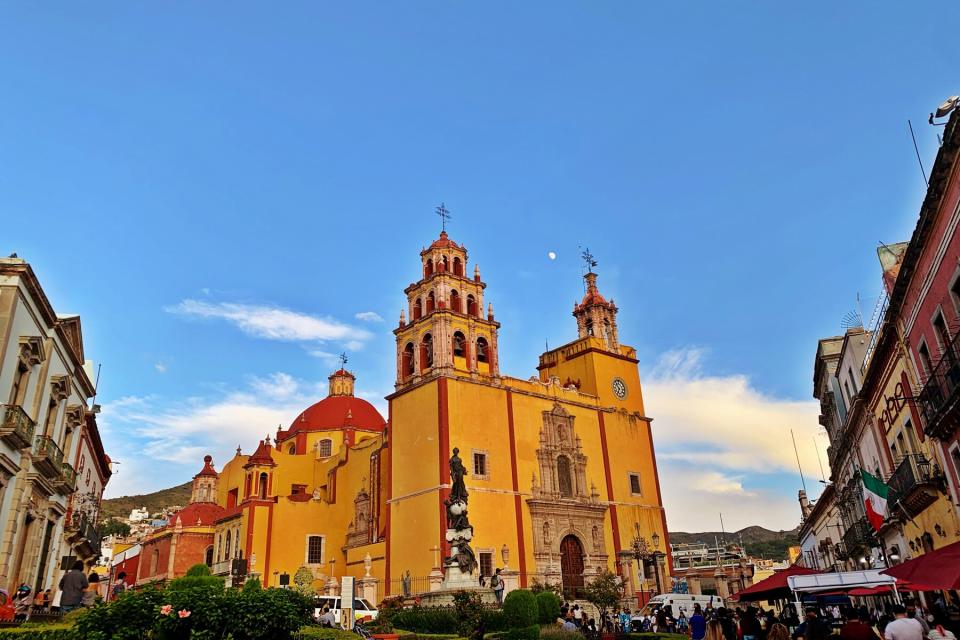
Courtesy of Alisha Prakash
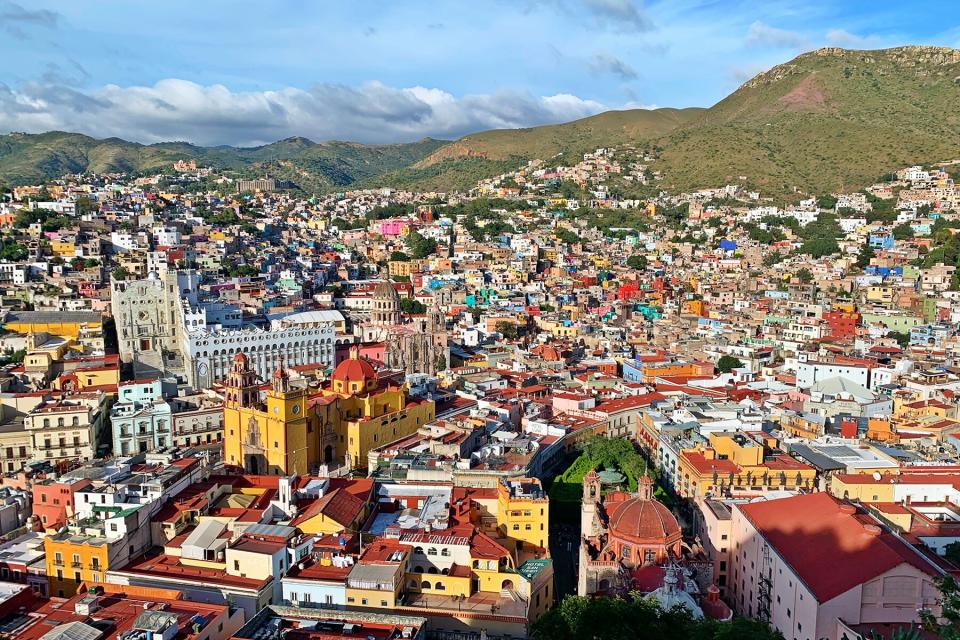
Courtesy of Alisha Prakash
All of that action sits tucked among a hodgepodge of vibrant buildings — a riot of pinks, reds, yellows, blues, greens, and oranges spilling down quiet, cobblestone alleys and onto the lively, tree-lined main square, Jardin de la Union, where buskers provide a booming soundtrack.
And much like the variety of colors, so, too, are the vast and varied experiences and people that make up the region. "You can land in BJX [Airport] and drive in different directions — all nearby — and each city has something different," says Jorge Luis Cabrejos, marketing director for the Secretary of Tourism of the state of Guanajuato. "You can see and experience different things each time — there are a lot of destinations for different types of travelers."
Whether you prefer to do yoga in the mountains of Las Palomas, a peaceful preserve just a short drive from the city, or gallery hop in town; stay at a beautiful boutique hotel like Casa del Rector or opt for neo-classical elegance at Villa Maria Cristina; dine at upscale restaurants like Casa Valadez or grab a churro from a vendor at the top of the funicular at El Pipila, there's something for everyone here.
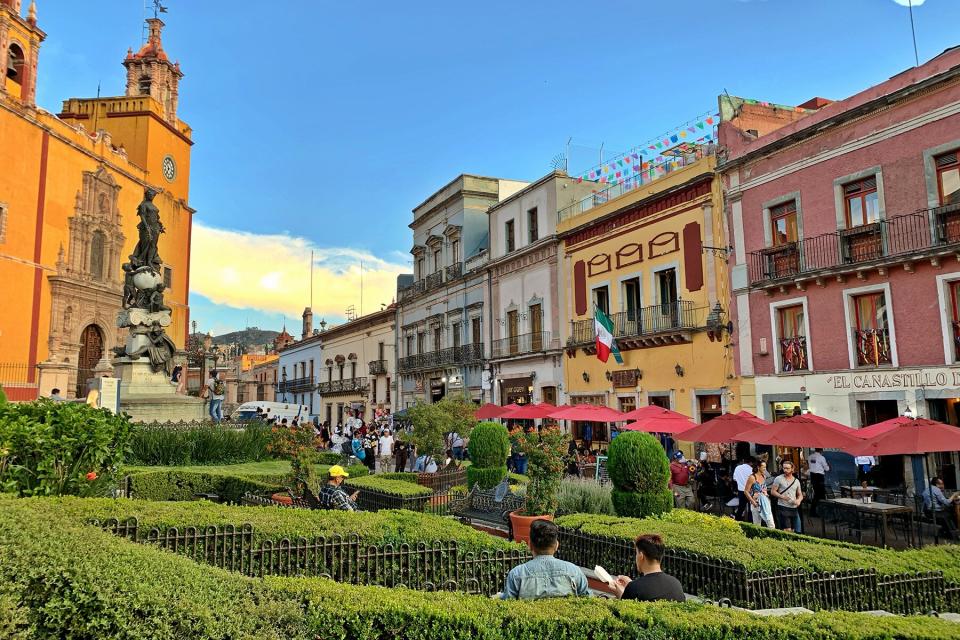
Courtesy of Alisha Prakash
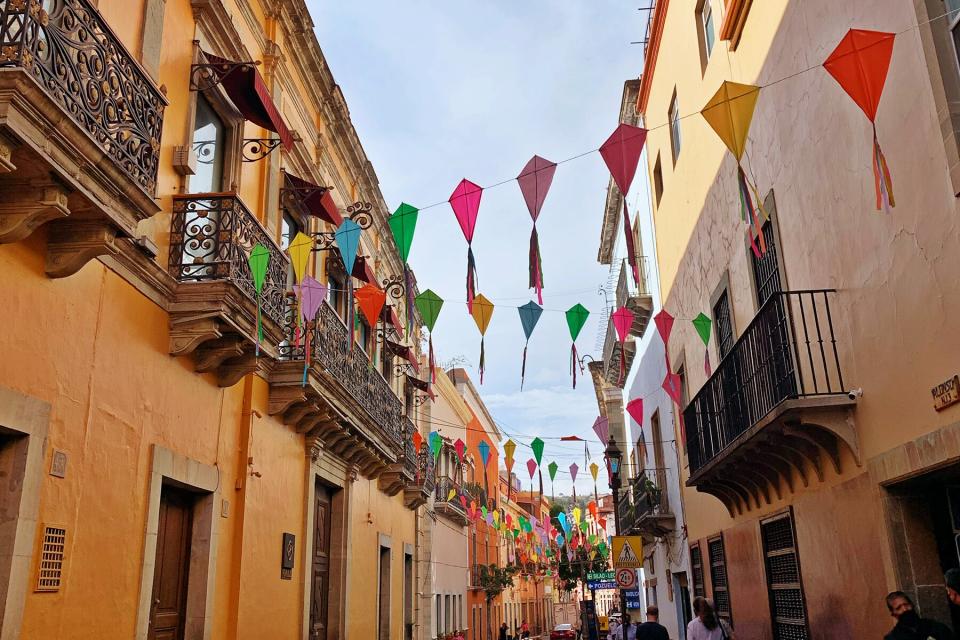
Courtesy of Alisha Prakash
Gabriel Alcaraz, a city tour guide who has lived in Guanajuato for decades, tells us, "It's the way Mexico used to be, and still is." It's a place stuck in time, proving you can preserve true character while still adding modern-day luxuries, like, say, a chocolate-and-mezcal tasting with Jonathan Martinez of Xocola-T, a small boutique that makes its own to-die-for truffles.
Martinez, who has been experimenting with chocolate for over a decade, mixes his confections with various Mexican delicacies, from chapulines (grasshoppers) and chicharrones (fried pork skin) to bold flavors like tamarind and spicy chili. And he, too, eagerly shared his passion with us — it wasn't simply about sampling the chocolate and mezcal, but really savoring it with all senses. First, he encouraged us to smell the mezcal — picking up the cup with our left hand, then our right — noticing the ever-so-slight nuances in aroma. Next, we dabbed a bit on our palm to feel its silky, almost oily texture. Finally, he said, "take a bite of chocolate, press it in your mouth, and let it melt." Then, "kiss" the mezcal.
Though I can't say I discerned much of a difference when smelling and touching the mezcals, one thing became clear: Martinez, much like Alma and Hermes and the Hernandez family and all the people that make up the beautiful destination, are truly the soul of this place. It's no wonder, then, that they call this region the "heart of Mexico."
Alisha Prakash is Travel + Leisure's senior digital editor. A New Yorker through and through, she's caught in a love affair between big cities and the great outdoors. Follow her adventures on Instagram @alishaprakash and Twitter @alishasays.

